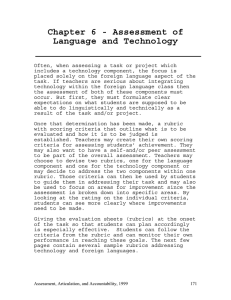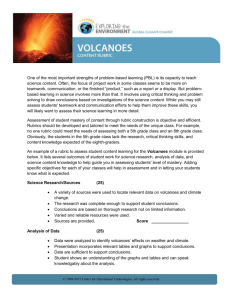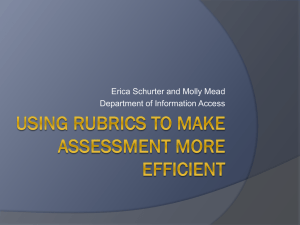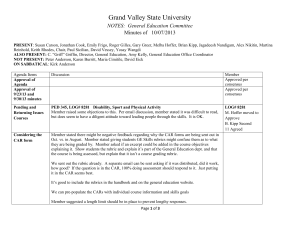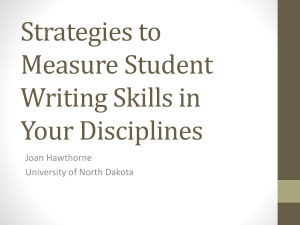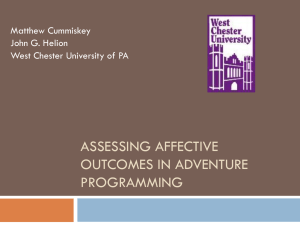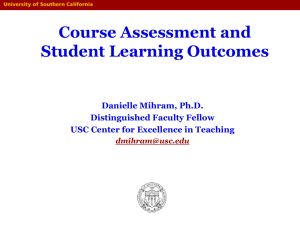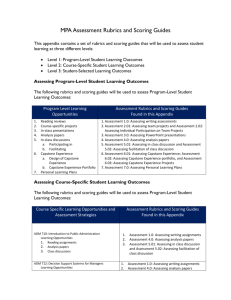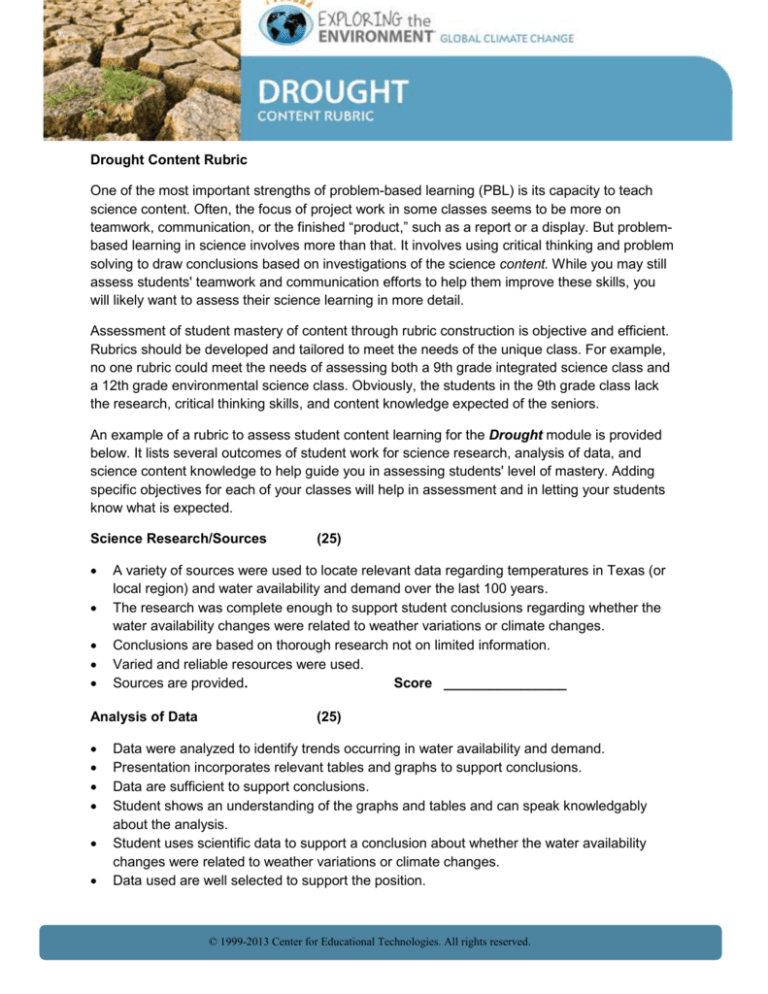
Drought Content Rubric
One of the most important strengths of problem-based learning (PBL) is its capacity to teach
science content. Often, the focus of project work in some classes seems to be more on
teamwork, communication, or the finished “product,” such as a report or a display. But problembased learning in science involves more than that. It involves using critical thinking and problem
solving to draw conclusions based on investigations of the science content. While you may still
assess students' teamwork and communication efforts to help them improve these skills, you
will likely want to assess their science learning in more detail.
Assessment of student mastery of content through rubric construction is objective and efficient.
Rubrics should be developed and tailored to meet the needs of the unique class. For example,
no one rubric could meet the needs of assessing both a 9th grade integrated science class and
a 12th grade environmental science class. Obviously, the students in the 9th grade class lack
the research, critical thinking skills, and content knowledge expected of the seniors.
An example of a rubric to assess student content learning for the Drought module is provided
below. It lists several outcomes of student work for science research, analysis of data, and
science content knowledge to help guide you in assessing students' level of mastery. Adding
specific objectives for each of your classes will help in assessment and in letting your students
know what is expected.
Science Research/Sources
A variety of sources were used to locate relevant data regarding temperatures in Texas (or
local region) and water availability and demand over the last 100 years.
The research was complete enough to support student conclusions regarding whether the
water availability changes were related to weather variations or climate changes.
Conclusions are based on thorough research not on limited information.
Varied and reliable resources were used.
Sources are provided.
Score ________________
Analysis of Data
(25)
(25)
Data were analyzed to identify trends occurring in water availability and demand.
Presentation incorporates relevant tables and graphs to support conclusions.
Data are sufficient to support conclusions.
Student shows an understanding of the graphs and tables and can speak knowledgably
about the analysis.
Student uses scientific data to support a conclusion about whether the water availability
changes were related to weather variations or climate changes.
Data used are well selected to support the position.
© 1999-2013 Center for Educational Technologies. All rights reserved.
Data and supporting graphics extend beyond the basic.
Score ________________
Science Content Knowledge
(50)
Student distinguishes weather variations from climate change and can give specific
examples of how these two processes differ, citing historical weather events and climate
science data.
Student correctly identifies variables associated with weather vs. climate.
Student demonstrates an understanding of the background information on the causes of
climate change, potential effects, and the concept of global carbon sinks and sources and
their potential impact on precipitation levels and water availability.
Student can describe underlying environmental mechanisms that drive precipitation levels
and risks of drought.
Student can identify causes of increased global mean temperatures.
Student can explain possible human consequences to predicted global climate changes.
Student explains the sources of key atmospheric greenhouse gases and can explain their
impact on regional and global temperatures and changes in average precipitation in different
regions.
Score ________________
Note:
Several types of rubrics for assessing teamwork and behaviors during problem-based learning
assignments are included in the Teacher Pages for Global Climate Change modules.
Developing Rubrics at
presents an overview of the
benefits of rubric use when assessing student PBL work and also presents an example of
some Guidelines for Developing a Rubric by Donna Szpyrka and Ellyn B. Smith of Florida's
Statewide Systemic Initiative.
Assessment in Global Climate Change PBLs at
discusses the importance of involving students in the assessment process at the beginning
of their problem-based learning work. This allows students to work more productively, gives
them a clearer idea of what they are supposed to be learning, and reduces their stress
about how they will be evaluated.
Assessing Behavior in PBL Projects at
provides examples of rubrics that can be used to assess team and individual responsibility.
© 1999-2013 Center for Educational Technologies. All rights reserved.

